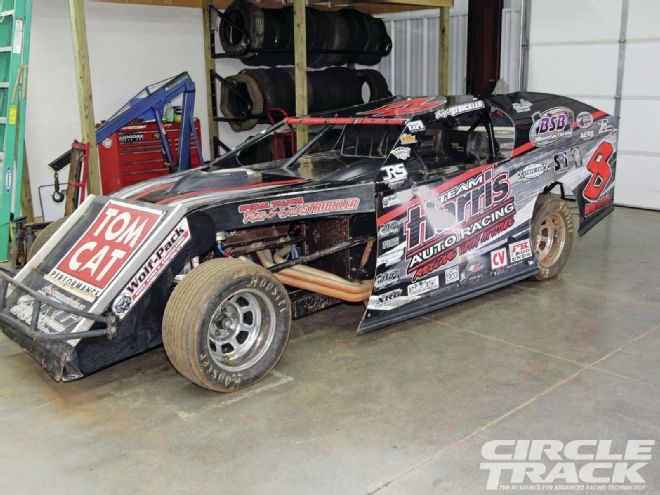
Traditional thinking holds that aerodynamics are only important to the NASCAR Cup guys because they are going so fast. For tight bullrings, which are typical for Saturday-night racing, where the speeds are slower, aero just isn’t as important. And when it comes to dirt track racing, unless you’re in a Sprint Car with a giant wing on top, slapping a spoiler on the back is about all you can do.
Nothing could be further from the truth. Yes, aerodynamics play a larger role on how your race car behaves the faster you are going, but even on tight, low-speed racetracks taking advantage of a few aero tricks can help you gain an advantage on the competition. When NASCAR Sprint Cup teams regularly spend entire days at a wind tunnel trying to determine the best way to shape the top of the front fenders, you’d better believe that there are things you can do on your dirt car where the rules are much less restrictive when it comes to the things you can do to the body.
To find out more we spent an afternoon in the race shops of Kyle Strickler Motorsports. Strickler is one of the most successful Dirt Modified drivers in the country when it comes to the IMCA/UMP style cars. In fact, Stricker is so successful he’s one of the few IMCA/UMP Dirt Modified drivers in the country who is doing it as a full-time job. And his results speak for themselves: When we spoke with Stickler it was still barely mid-season and he’d already won 22 events across the country.
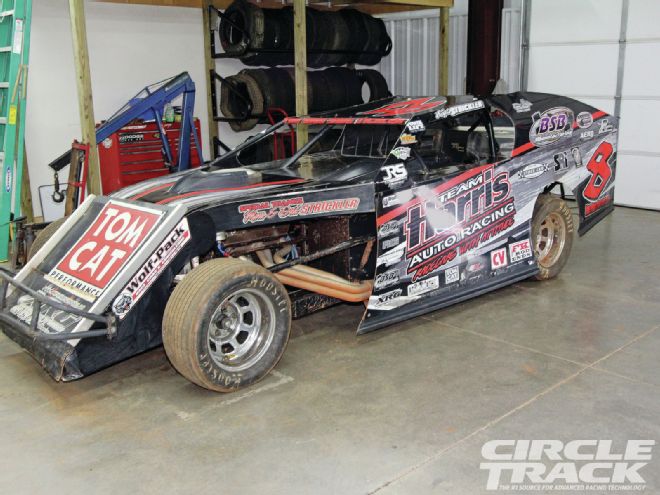 At first glance, Kyle Strickler’s Dirt Modified race car looks like any other. But Stickler uses many aero tricks to help keep the car planted to the track that you can also take advantage of.
At first glance, Kyle Strickler’s Dirt Modified race car looks like any other. But Stickler uses many aero tricks to help keep the car planted to the track that you can also take advantage of.
Besides winning races, Strickler also earns his keep building and setting up cars, as well as consulting for other racers who want to improve their performance on dirt. His latest venture is High Side Bodies & Fabrication, a company that—you guessed it—sells race car bodies for Dirt Modified cars. Strickler builds bodies designed to take full advantage of aerodynamics based on his years of racing, as well as wind tunnel testing with Dirt Late Models.
Strickler agreed to share with us many of the aero tricks he incorporates into his bodies. Some are the basics, but still useful, while others are only suitable for specific situations, but again, still useful. Depending on your rule book, you may be able to use all the tips or just a few, but any and all should help keep your race car planted to the track so that you can make more use of the available horsepower.
01. How you position your hood depends a lot on whether you will be able to run a rear spoiler. If you are running a rear spoiler, consider the roof a directional device. Make the roof so that it is slightly convex (rounded so that its highest point is in the center and sloping down on both ends) if you can get away with it. This helps guide air coming off the roof onto the rear spoiler. If, however, you aren’t running a rear spoiler then the roof becomes a downforce device. Make the roof as long and as wide as possible and put as much rake into it as possible. Do this by making the rear of the roof as high as allowed by the rules and the front as low as possible, but still high enough that you can get into and out of the window opening safely. Moving the roof forward and back helps move the downforce forward and back on the chassis. Generally, Strickler says he likes to move the roof forward until it starts to block his view of the flagstand from the driver seat.
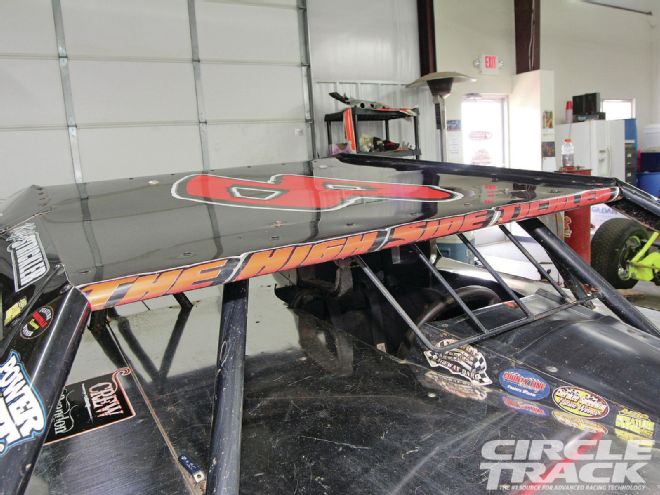
02. Notice how the right-side door panel is cambered out approximately 15 degrees. This way when the car rolls over on the right side through the turns the door panel is vertical, helping increase side force. If the door panel is vertical when the car is sitting at ride height, when it is rolling through the turn the bottom edge of the panel will be inboard the top edge—which actually funnels air underneath the car. You also want to make sure you run a skirt along the bottom of the door panel that is set so it nearly touches the track surface when the car is going through the turns. This helps seal off what becomes the leading edge of the car to keep air from getting underneath the car.
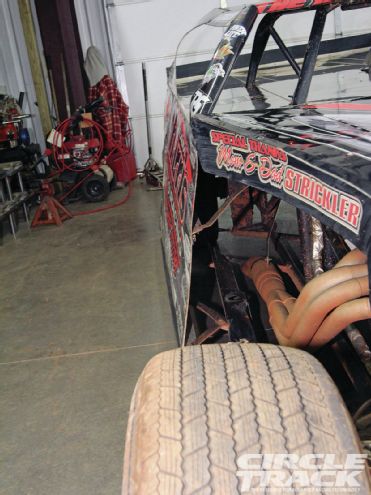
03. The right-side sail panel should also be considered an extension of the door panel and rear quarter. Make it follow the same line as the door panel as long as possible. That means you have to make the curve to join the sail panel to the roof fairly sharp and as high as you can get it.
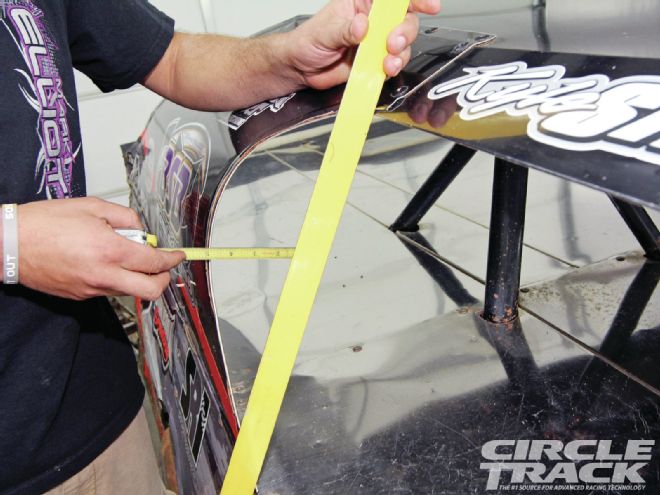
04. Strickler follows the same train of thought with the lower portion of the A-pillar on the right side as he does the sail panel. Again, it might not be much, but anything you can do to help generate side force as the car slides through the turns will help plant the right-side tires.
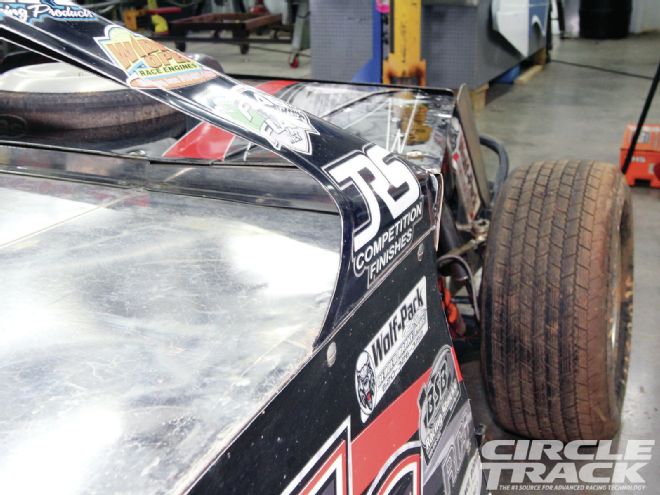
05. The purpose of a rear spoiler is obvious, so we won’t bore you with a discussion on how one works. One interesting difference from the norm is that Strickler never runs any braces on the front of the spoiler if he can help it. Remember, as the car slides through the turns on a dirt track, air travels along the length of the rear spoiler as much as it travels over it. Any brace on the front of the spoiler disturbs the air moving down the spoiler, reducing how effectively the spoiler can produce downforce for the rest of its length. If the spoiler does need bracing, Strickler recommends using horizontal straps that provide minimal obstruction to air moving laterally along the spoiler.
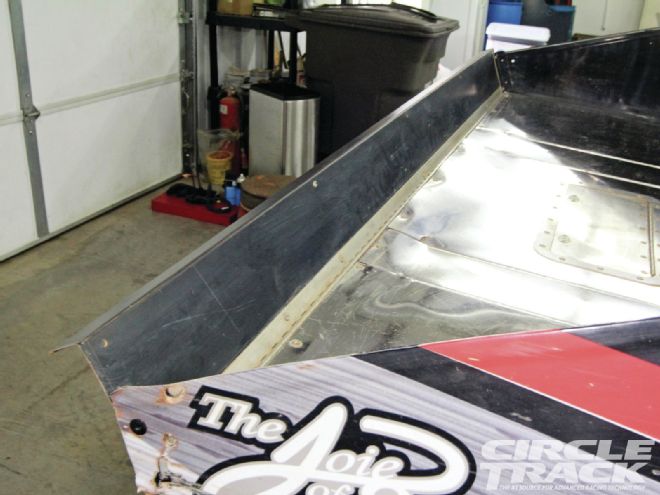
Matters of Balance
When we talked to Strickler, before he would even begin talking about aerodynamics he stressed the need for maintaining proper balance. “Sometimes it is possible to overload either the front or the rear of the car when it comes to aerodynamic downforce, depending on what the rules allow,” Strickler explains. “If you cannot get the grip between the tires and the track balanced from front to rear, you can be better off by backing off on the downforce generated to get the car back into balance so that you aren’t always too loose or too tight. It can be tough to give it up sometimes, but I’ve seen how it can make you faster.”
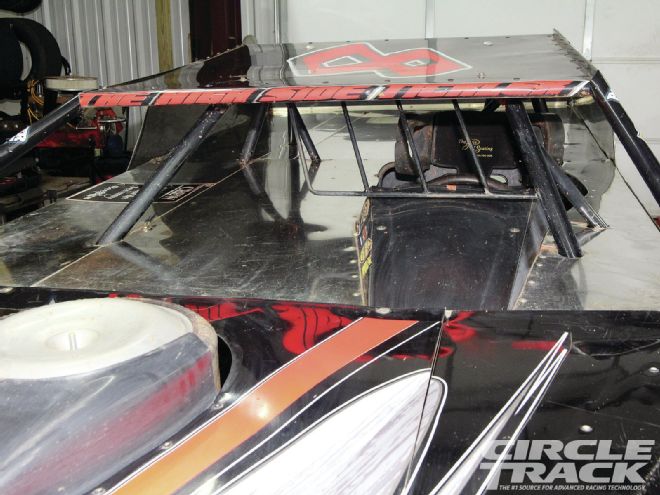 <strong> 06. </strong>The deck on a dirt car isn’t just to keep mud away from the chassis. It actually creates downforce along the length of the chassis. The spoiler creates a high-pressure zone of air that extends from the spoiler forward. By keeping the deck smooth and free of splits, cracks and holes it helps that high-pressure zone to work more efficiently and creates a large area of downforce.
<strong> 06. </strong>The deck on a dirt car isn’t just to keep mud away from the chassis. It actually creates downforce along the length of the chassis. The spoiler creates a high-pressure zone of air that extends from the spoiler forward. By keeping the deck smooth and free of splits, cracks and holes it helps that high-pressure zone to work more efficiently and creates a large area of downforce.
As an example, Strickler points to a weekend racing at County Line Raceway in North Carolina. County Line allows its Modified classes to run an 8-inch tall rear spoiler. After struggling through the hot laps session to find the right balance for the car, Strickler says he eventually realized the tall spoiler was simply too much for the Modified chassis given the racetrack and conditions. At the last minute his crew bolted up a smaller 5-inch spoiler and proceeded to set the track record.
The moral here? Easy: When it comes to racing the only thing that matters is how quickly you can get around the track. Take advantage of everything you can—aero, chassis, engine, you name it—but if anything gets in the way of lowering your lap times, ditch it like a bad habit.
Yes, there is such a thing as aerodynamics for dirt cars. here’s how to take advantage of it.
Aerodynamics play a larger role on how your race car behaves the faster you are going, but even on tight, low-speed racetracks taking advantage of a few aero tricks can help you gain an advantage on the competition.